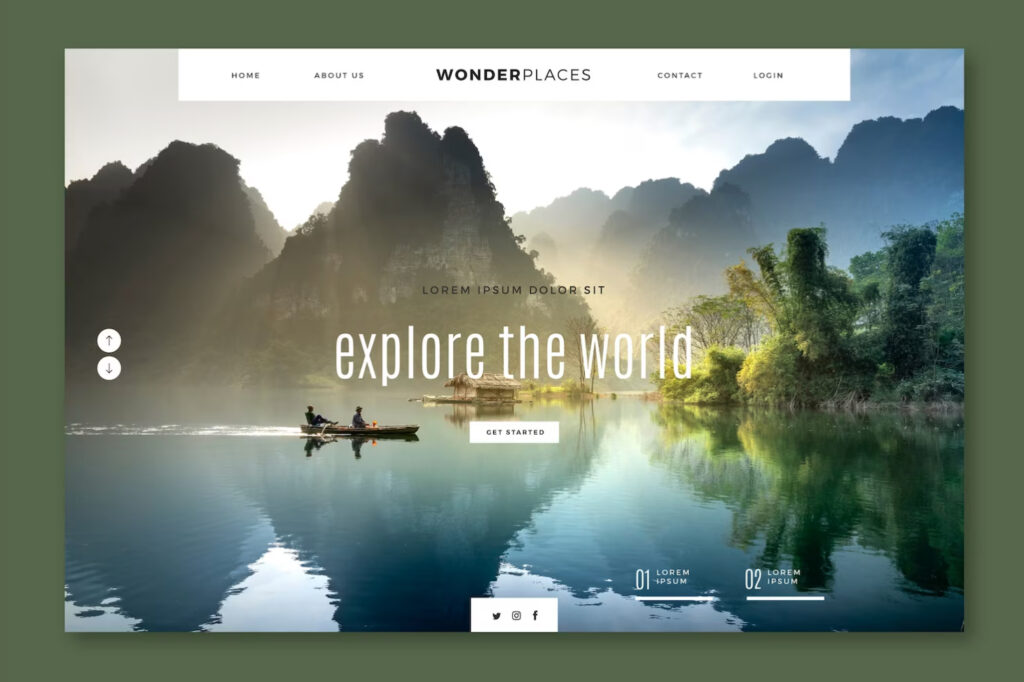Your WordPress homepage is the first thing visitors see when they land on your site, so it’s essential to make a good first impression. Designing an effective homepage can be a daunting task, but with the help of WordPress page builder plugins, it’s easier than ever to create a professional-looking design without needing to hire a web developer. In this blog post, we’ll provide tips and best practices for designing your homepage with page builder plugins, including how to select the right plugin for your needs, customize your design elements, and optimize your content for SEO. Whether you’re starting a new website or looking to revamp your existing one, this guide will help you create a visually stunning WordPress homepage that effectively communicates your brand message and engages your visitors.
Why Use Page Builder Plugins for Your WordPress Homepage?
Using a page builder plugin for your WordPress homepage can offer numerous benefits. First and foremost, page builder plugins are designed to be easy to use, even if you don’t have any coding or design experience. They typically feature drag-and-drop interfaces that allow you to easily add, remove, and rearrange design elements on your homepage. This makes it simple to create a custom design that meets your specific needs, without needing to spend hours learning how to code or design from scratch.
Another advantage of using page builder plugins is their flexibility. They offer a wide range of customization options, including different layouts, color schemes, fonts, and content elements. This means you can create a unique and visually appealing design that aligns with your brand identity and stands out from your competitors.
Using page builder plugins can also save you time and money compared to hiring a web developer. Instead of paying a professional to design your homepage, you can create a professional-looking design yourself. This not only saves money, but it also gives you more control over the final design and allows you to make updates and changes as needed.
Choosing the Right Page Builder Plugin for Your Needs
With so many page builder plugins available for WordPress, it can be difficult to choose the right one for your needs. To help make your decision easier, here are some factors to consider when selecting a page builder plugin:
- Compatibility with your WordPress theme: Make sure the page builder plugin you choose is compatible with your WordPress theme. Some page builder plugins work better with certain themes than others, so it’s important to do your research and ensure they will work well together.
- Budget: Page builder plugins can range in price from free to several hundred dollars. Consider your budget when selecting a plugin, but keep in mind that a more expensive plugin may offer more features and better support.
- Features: Consider what features are important to you. Do you need a wide variety of pre-designed templates to choose from? Are you looking for a plugin that offers advanced customization options? Do you want a plugin that integrates with other tools, such as email marketing software or social media platforms? Make a list of your must-have features and look for plugins that offer them.
- Ease of use: Look for a plugin that is easy to use and has a user-friendly interface. Some plugins may have a steeper learning curve than others, so it’s important to consider your comfort level with technology and design.
Best Practices for Designing Your WordPress Homepage with Page Builder Plugins
Before you start designing your WordPress homepage with a page builder plugin, it’s important to define your goals and target audience. Identifying your target audience will help you tailor your design and content to their preferences and needs. Additionally, setting clear goals that align with your brand message will help ensure that your homepage effectively communicates your message and drives conversions. To identify your target audience, consider factors such as age, gender, interests, and buying habits. To set goals, think about what you want visitors to do on your homepage, such as signing up for a newsletter, making a purchase, or requesting more information.
Once you have defined your goals and target audience, it’s time to select a layout and template for your homepage. Look for a layout and template that aligns with your goals and target audience. Consider elements such as color scheme, typography, and content hierarchy when selecting a design. Choose a template that makes it easy to add and remove design elements, as well as customize colors, fonts, and other design elements.
After selecting a layout and template, it’s time to customize the design elements to create a unique look and feel that reflects your brand identity. Customize elements such as background images, headers, and icons to create a visually appealing design. Use your brand colors and typography to make your design consistent with your brand identity.
Adding relevant content is crucial for engaging visitors and driving conversions on your homepage. Use headings, subheadings, and bullet points to make your content scannable and easy to read. Make sure your content is relevant to your target audience and highlights the benefits of your products or services. Use clear calls to action to encourage visitors to take action.
Finally, optimizing your homepage for SEO is important for driving traffic and improving your search engine rankings. Include relevant keywords in your content and meta descriptions, optimize images for faster load times, and ensure your site is mobile-friendly to improve your search engine rankings. Additionally, use tools such as Google Analytics to track your traffic and measure the success of your homepage design.
Conclusion
Designing your WordPress homepage using page builder plugins can save you time and money, while also allowing you to create a unique and visually appealing design that aligns with your brand message. By following best practices such as defining your goals and target audience, selecting a layout and template, customizing design elements, adding relevant content, and optimizing for SEO, you can create a homepage that engages visitors and drives conversions.
We encourage you to explore the different page builder plugins available and choose one that meets your specific needs. By using the tips and best practices outlined in this blog post, you can create a homepage that effectively communicates your brand message and encourages visitors to take action. So why wait? Start designing your own homepage today and see the impact it can have on your business!


